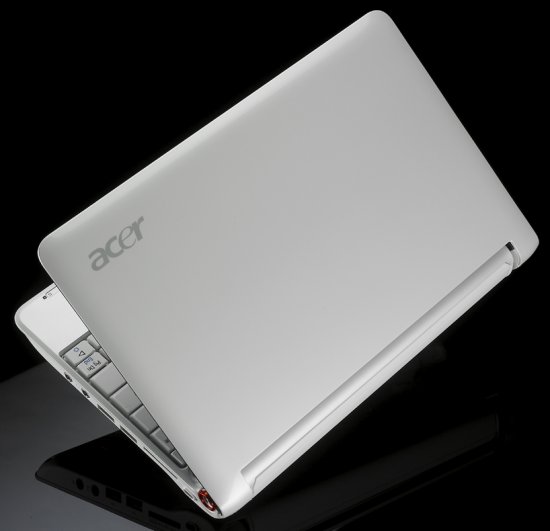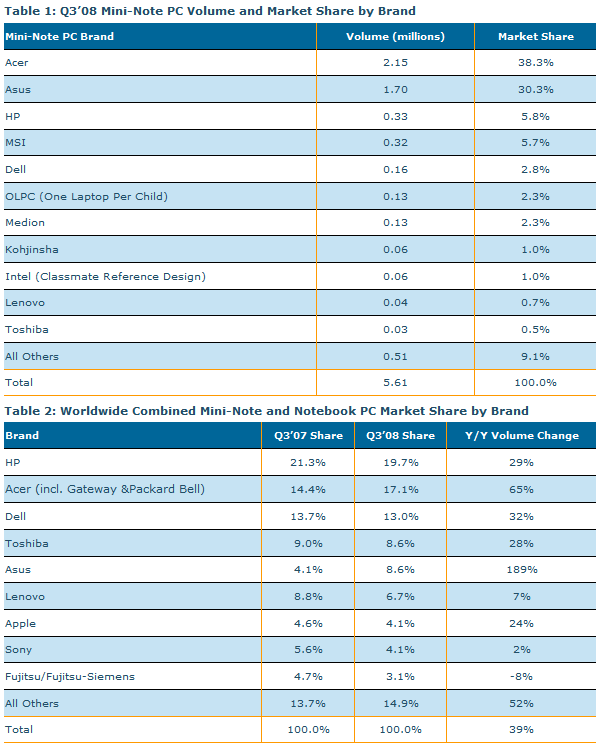In its latest Quarterly Notebook PC Shipment and Forecast Report, DisplaySearch analyzes how and why the mini-note PC market is contributing to the growth in portable computing and why these products are creating a new market, rather than taking share from an existing segment. Additionally, the report examines why early entrants into the space are struggling to maintain share, whereas later entrants have rapidly surged in volume.
Mini-note PCs have been in the market for many years; however, many of these products were significantly more expensive than mainstream notebook PCs. Asus threw open the door to the mini-note market with their late 2007 launch of their Eee PC. This product, and the many that followed, are small, bare-bones devices with ASPs that typically start at US$300. In 2007, this market was less than 1 million units. By the end of 2008, DisplaySearch expects this market to surge to more than 14 million units. Unlike the UMPC products which were launched with great fanfare but very little commercial success in 2005 and 2006, mini-note PCs are distinct products that favor the traditional notebook PC clamshell form factor as opposed to the slate- or brick-style UMPC products.
While UMPCs have morphed into vertical market products with a variety of application-specific uses, the mini-note PC market is poised for dramatic growth, propelled by low prices and a user experience that much more closely mirrors a typical PC, as the majority of these devices run Windows XP or a Linux OS. Mini-note PCs range from those based on philanthropic or subsidized business models for emerging markets (like the OLPC program), to devices targeted at first-time PC buyers, to consumer and enterprise users in developed regions that seek an very thin and light product to supplement their existing PC.
“With the lone exception of Apple, all of the top 10 PC brands have entered the mini-note PC market, initially as a response to the competitive threat posed by Asus, but also to satisfy demand from customers for low-priced, thin and very light (less than 3 pounds) products that provide at least a modicum of typical office software functionality and also enable greater mobility,” said John F. Jacobs, Director of Notebook Market Research and author of the report.

Here's a look at the data, there's also a table that shows the combined mini-note and notebook PC market share by brand.
